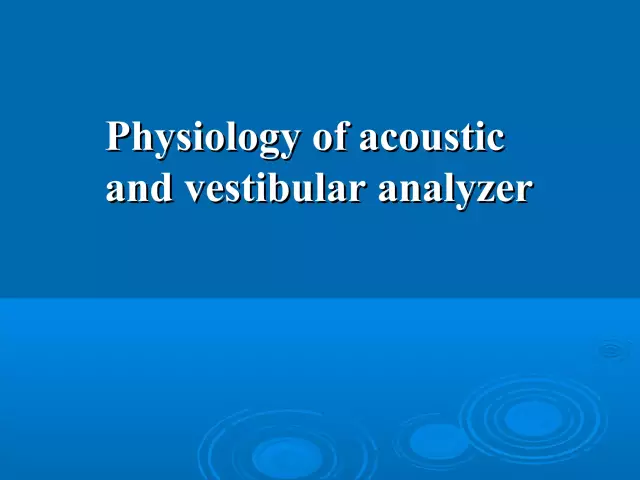- Author Curtis Blomfield [email protected].
- Public 2023-12-16 20:44.
- Last modified 2025-01-23 17:01.
The vestibular analyzer is a system of nervous structures and mechanoreceptors that allows a person to perceive and correctly orient the position of his body in space. Various kinds of accelerations serve as stimuli for mechanoreceptors.

Angular accelerations excite ampullar receptors. The rectilinear nature of the accelerations contributes to the generation of impulses in the vestibule sensors. Vestibular and ampullar impulses are converted into nerve signals and help the central nervous system to maintain orientation in space.
Structure of the human vestibular analyzer
Static reflexes are realized due to the interaction of organs that are able to perceive irritations and convert them into nerve impulses. Signals go from the vestibular apparatus to the vestibular nerve, through which they enter the regions of the medulla oblongata. In the vestibule are the uterus and the sac. Their

surface covered with sensory cells,which are divided into columnar and pear-shaped. The sensory hairs of these cells are surrounded by an otolithic membrane. When the head moves due to gravity, the otoliths are displaced and affect the sensory hairs. Nerve endings are connected to the basal part of the sensor cells, which receive signals from the hairs.
Main Functions
The study of the vestibular analyzer revealed five types of reactions that are produced by it:
- Vestibulosomatic reactions due to vestibulospinal connections. With their help, the vestibular analyzer contributes to the redistribution of muscle tone at various accelerations.
- Oculomotor reactions. They are caused by the presence of eye-motor connections and cause involuntary eye movements or nystagmus. This process has a two-phase character. In the first phase, the ampullar receptor is irritated and the subsequent slow movement of the eyes to the side occurs. In the second phase, as a result of a quick compensatory movement, the eyeballs return to their original position. The vestibular analyzer provokes nystagmus to fix the outgoing fragments of the environment during rotational movement. It also helps a person to follow objects that move at high speed.
- Vestibulovegetative functions are adaptive
- Vestibulo-cerebellar reactionsappear during active movement. They help control the position of the body in space when the body is in a dynamic state. This is due to the correct distribution of muscle tone during various accelerations.
- Due to the presence of connections with the cerebral cortex, the vestibular analyzer helps to exercise central control and correction of the vestibulosensory response.

character. If these reactions occur, an increase in heart rate, an increase in blood pressure, and the appearance of nausea against the background of the action of acceleration are possible.






